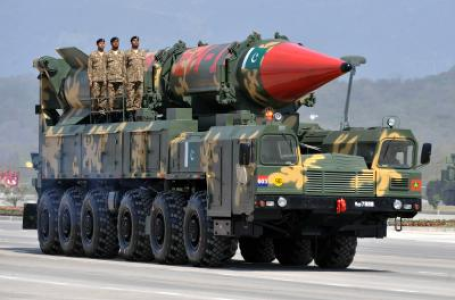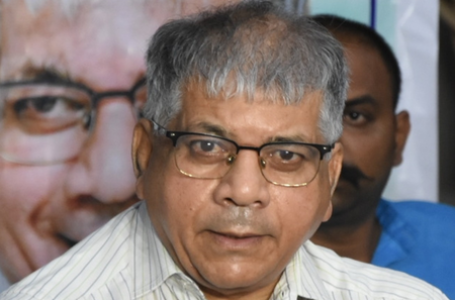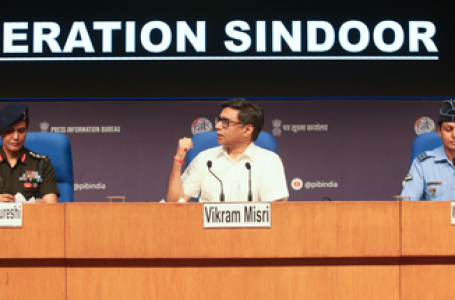
Image source: @KimAtiWagner
Instead of becoming a feather in the cap of the central government just before the Punjab elections, the newly renovated Jallianwala Bagh in Amritsar, has resulted in sharp criticism from historians and opposition. Both are questioning government’s inability to differentiate between a solemn historical place and an amusement park or a picnic spot.
Some went ahead to accuse the government of “insulting” the memory of its martyrs.
Critics feel that a place like Jallianwala Bagh, where hundreds of martyrs fell to the bullets is a place of sanctity, solemnity, and mourning.
Instead going in for a restoration using modern restoration technology, which was obviously required in a memorial site after 100 years, the government went in for an all-out renovation. That too, without a wider consultation with local residents, historians and conservation architects as per critics.
They instead see a vulgar attempt create a Disneylandesque amusement park like-setting out of a memorial. According to them, the entry seems like entering a “five star hotel.”
The increasing footfalls to the renovated site has also not augured well with the naysayers as they believe that a Memorial is not meant to be a “tourist” spot.
People should enter the place to pay their respects to the martyrs and learn more about this landmark struggle.
A large number of exhibits with multi-media in four separate halls, a lotus pond, a laser lights show, a glass- enclosed well, manicured and landscaped greenery, detract from the seriousness and gravity of the site where the British Empire committed one of its worst atrocities.
Devoid of its original essence
Head of the Department of History — Guru Nanak Dev University in Amritsar, Amandeep Bal informs “I have been to Cellular Jail in the Andamans and looking at the multimedia show there….nearly all the 200 visitors were left in tears. At the renovated Jallianwala Bagh I found large crowds rushing from one gallery to another, not even waiting to listen or see anything.”
In their efforts to put up a grand showbiz using lot of event management techniques and style and modern exhibition technologies, the overhaul seems to have discarded “soul” of the place in all the flashy glitz and glamour.
The objective is to attract large crowds. Rahter it is to get sensitive patriotic people in India and abroad to come, see for themselves, and bow their heads down in the hallowed grounds where an officer of the most powerful empire of the world gunned down over a thousand innocent people.
The aforementioned changes are problematic because Jallianwala Bagh represents one of the most horrifying and inhuman acts committed during the British rule.
Around one thousand peaceful unarmed people were brutally murdered and another thousand injured by the British army under General Reginald Dyer on April 13,1919. The troops were ordered to open fire and continue incessantly till their ammunition exhausted.
Elaborating on the what happened that day Ms. Bal states, “Around 15,000-20,000 people were at Jallianwala Bagh. It was a holiday crowd on a Sunday afternoon in the six-seven acre open ground (it had not been made into a park). Being Baisakhi, after paying customary homage at Golden Temple a lot of people with families from both rural and urban areas would have also walked in. Children were there to play in the open grounds. It was a floating population scattered all around and different people were there for different reasons and some for no reason at all.”
That fateful day
This was a peaceful crowd enjoying their Sunday who must have got the shock of their lives when they suddenly saw soldiers arrive there take positions with .303 calibre rifles and started firing straight at them.
“Initially they thought firing was being done in the air or blank bullets were being fired but they realised their horrible mistake once they saw bodies dropping to the ground,” the History Professor added.
This kind of a unprovoked merciless killing of innocent Indians by the British Armed forces personnel just demonstrated the megalomania and perhaps resulted from the inherent fear and insecurity of General Dyer.
On the face of it, his decision to fire seems to have resulted out of sheer panic looking at the 15,000 to 20,000 Indians at Jallianwala Bagh.
However, there may have been other sinister designs.
The worst part of this was that shots were fired without a single word of warning given to the public.
General Dyer may have been provoked because he felt that his orders banning any kind of assembly of more than four people in the city had been flouted. Although there was no violence or any kind of provocation by the Indians for the military to shoot.
Who orders shoot to kill for just an unlawful assembly?
Once the relentless firing started many people fled here and there in desperation. Some fell into the old well within the Bagh and others tried to scale the wall but were shot on the back.
A method to the madness
With the full endorsement of Punjab Lt Governor Michael O Dwyer, General Dyer wanted to pulverize and wipe out any Indian opposition. He is reported to have admitted in his own recorded evidence that sought to “teach the Indians a lesson.”
The British obviously wanted to send a countrywide message that any rebellion or protest will be crushed ruthlessly. Clearly this was a throwback to the First War of Independence in 1857.
General Reginald Dyer came on April 11 from Jallandhar to Amritsar with his Army unit and took control over the city.
Ms Bal said, “We do not know whether he came on his own or on someone’s order , as there is no written order. But he could have not come without clearance from Lt. Governor Michael O’Dwyer,” she says.
On April 12, an order was passed by the city administration that all cremations and burials should be over by 2 pm.
The historian adds, on the evening of April 12, Dyer got two proclamations drafted which were read only in half of the city on April 13, the day of the Baisakhi itself. One was that more than four persons cannot assemble (Section 144) during the day and the being the implementation of a curfew in the evenings after 8 p.m.
Proclamations were read only in half the city and there was no knowledge of this disseminated the Jallianwala Bagh — a well-known spot for the public to gather.
“When you know that there is Baisakhi and people will come in thousands to Golden Temple. The proclamation being made and that too in half of the city ensured that the public was unaware of any such orders. The public did not know anything about the proclamation that no gathering, no meetings and no processions were to be held,” she said.
Calls to attend a meeting about the arrest of two prominent local leaders Saifuddin Kichlew and Satyapal at 4:30 pm at Jallianwala Bagh on 12th evening had been going around
Ms Bal also mentioned one viewpoint among historians that Jallianwala Bagh was a pre-meditated conspiracy due to which there was low key announcement on Baisakhi of Section 144. Thus, people were allowed to gather in large numbers in Jalianwala Bagh so that they could be taught a lesson for rebelling.
The view, she said, is bolstered by the fact that a person known as Hansraj, who organized the meeting, went around spreading the message on April 12, about the meeting to be addressed by a local leader Kanhaiya Lal who was going to deliver messages from Kitchlew and Satyapal. Hansraj not only turned into a British approver during the trials later but was suspected to have been a police informer from the beginning itself.
“Kanhaiya Lal is supposed to have said that he was unaware of any meeting being called in his name by Hansraj,” Ms Bal claims.
She also says that if the conspiracy theory then General Dyer’s action of unprovoked firing is to be believed, that also makes sense (though it is a more horrible surmise) because then he came on purpose to kill Indians.
Jallianwala Bagh was a vicious naked and unparalleled show of brutality, which became a turning point in history of India’s Independence Movement and a death knell for the British Raj in India.
The massacre’s resonance today
One of the darkest blots on the British empire for which they have yet to apologize to the Indian nation, even though British Prime Minister Cameron during his visit to Jallianwala Bagh memorial to pay homage to the martyrs in 2013 called it a “shameful act.” The British Prime Minister Theresa May stopped short of a clear unequivocal apology by stating during the 100th anniversary of the Jallianwala Bagh massacre in 2019 in British Parliament, “We deeply regret what happened and the suffering caused by the massacre.”
A full apology would tear into shreds the dearly held opinion of the British that the Empire was a force for the good, a misconception under which many British folks still suffer.
British PM Winston Churchill is reported to have called it “An extraordinary event, a monstrous event, an event which stands in singular and sinister isolation.”
Michael O’Dwyer was shot dead by Shaheed Uddham Singh in London on April 13,1940 , to avenge the Jallianwala Bagh massacre. Singh was hanged for the murder after a very short trial.
Any memorial set up at this place should evoke the pain agony of the martyrs of Jallianwala Bagh besides a revulsion and disgust for the brutal mindset of those Britishers who perpetrated the crime.
Conserving with consensus
Conservation architect and heritage management specialist Ms Gurmeet Sangha Rai, who has spent three decades working in Punjab including two decades in Amritsar itself, said, “We have to take our history more seriously. You cannot trivialize it by some statues and some sound and light show and that’s it. We should not get into hype and jingoism. We have to understand that it is important for future generations.”
Rai, who has been on the jury of Asia Pacific Architectural Heritage Awards of UNESCO for over 10 years and is a consultant with Ministry Housing and Urban Affairs government of India informs that according to UNESCO, it is obligatory of every state party to look after its heritage.
The UNESCO talks about a participatory processes. If we look at sustainable development goals, communities are central to all sustainable development goals and cultural heritage is an important pillar of sustainable development.
She stresses, “Sustainable development is possible only if you understand the community . Culture is being recognized now? What is good for a village in Maharashtra may not be good for a village in Himachal?”
“If you are not sensitive to the cultural aspects of the community then you would be doing something which may be counterproductive ? Cultural nuances inform the decisions of a community. It is not about a building, but that structure is just a manifestation of culture.”
Ms Rai said, “When we deal with cultural heritage or a cultural site, we always understand the historical context at that point, we do very detailed research in terms of the context. What happened, the political social cultural narratives of that period that led to the manifestation of whatever you are dealing with.
When you get down to your Memorial, there will be a conservation protection of the material remains, while whatever you do is interpretation, you are actually going to communicate the story of that time.”
The story of that time and the context have to be very sensitive to the community, times , socio-cultural, political and economic conditions that led to a particular event.
“Then you want to evoke a certain behaviour of the visitor who comes there, a certain behaviour should take place. They must get to feel the solemnity and gravity of it all by looking at the structures. One should also be able to evoke a certain behaviour via a physical design,” she added.
If one has dancing fountains and similar objects, they evoke certain behaviour. If you still have water body you evoke different behaviour, through design you manage human behaviour.
Earlier the historic site used to have a garden. It had an open space with a memorial in the centre and people used it as a community garden. Other elements like a gallery with photographs of event and the well where people had jumped. Certain walls where bullet marks were there. It was in dense part of the walled city.
The new look Jallianwala Bagh Memorial “required more creative thinking , the references I have in my mind is the Memorial to the Murdered Jews of Europe in Berlin where Peter Eisenman has done the most phenomenal memorial, or how architect Kenzo Tange has responded to the bombing of Hiroshima in creating the Peace Park.”
“This was an opportunity for the renovators of the Jallianwala Bagh Memorial to create that amphitheatre like feeling , where people had stood during the Jallianwala Bagh massacre, this was the place where there should have been single markers to every person who died , instead of doing mounds with manicured lawns,” Rai elaborated.
Jallianwala Bagh was the beginning of the end of the British Empire. That event served as a warning towards any dissenters.
Rai also talks about a time when Punjab fell for the first time into British hands. The colonialists took 250 guns from Punjab and paraded those in Esplanade in Kolkata in Bengal, just to declare that Punjab has fallen.
Being sensitive to history
The Jallianwala Bagh holds some symbolic importance. The heritage expert remarks that the revolt had started against British rule in different parts of the country. They had no faith in the non-violence of the martial race of Sikhs.
“You have to understand the politics of that time and all this need to be communicated” Ms Rai said.
What Germans did is to create a memorial to the Murdered Jews in Europe in their prime street in Berlin.
They wanted future generations to understand what their forefathers did and that such a thing should never happen again.
Rai describes, “It is made of large gravestones. You feel like you have come to a graveyard and have to walk within it in a narrow space of one to 1.2 meters …towards the Interpretation Centre underground. But as you walk within it, you get the shock of your life because the floor of the place starts going down and there are moments when these gravestones become as tall as three meters tall. Therefore, you are feeling like a midget and you are walking among gravestones, it overwhelms you and at some point you want run and come out onto the roadside. They want to communicate the horror which happened in Germany which shook humanity or the earth itself. The entry itself has an impact. ”
“Unfortunately, despite the fact that the shocking Jallianwala massacre is virtually within living memory. Many descendants of those martyred still live close by to the site. Their feelings and opinions have not been factored in while making the present changes,” Rai laments.
The open well has now been enclosed with glass and the Lakhori bricks put there to make it look “antique” is extremely out of place. Lakhori bricks are from the Mughal period, Ms Rai supplements.
Knowledge generation is critical but much wider consultation would have been needed.
Jallianwala Bagh should have been preserved as a place to mourning, pay our respects to the martyrs, bow one’s head in shame for the horrible crimes humans beings are capable of. Unfortunately, these aspects of Jallianwala Bagh seem like a distant memory. – India News Stream



















